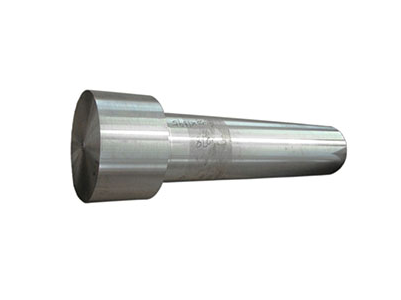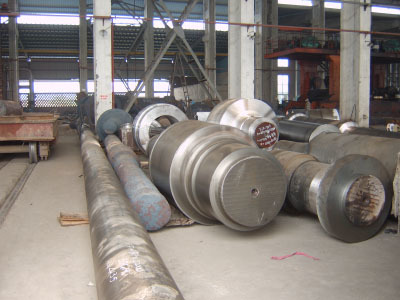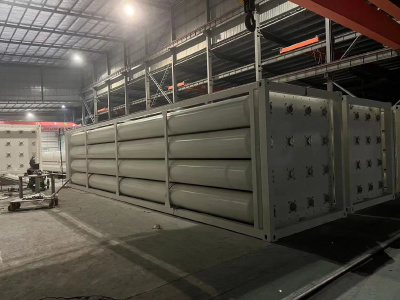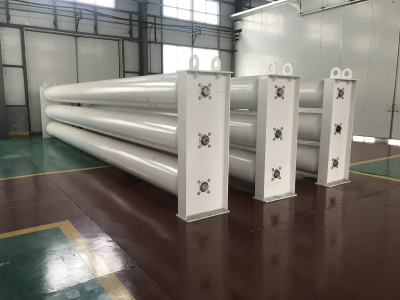Exploring the Benefits of Steel Forging for Ship Shafts: A Comprehensive Guide
Release Time:
Jul 05,2025
Exploring the Benefits of Steel Forging for Ship Shafts Table of Contents 1. Introduction to Steel Forging for Ship Shafts 2. What is Steel Forging? 3. Importance of Steel Forging in the Maritime Industry 4. Advantages of Steel Forging for Ship Shafts 4.1 Enhanced Strength and Durability 4.2 Improved Performance 4.3 Cost-Effectiveness

Exploring the Benefits of Steel Forging for Ship Shafts
Table of Contents
- 1. Introduction to Steel Forging for Ship Shafts
- 2. What is Steel Forging?
- 3. Importance of Steel Forging in the Maritime Industry
- 4. Advantages of Steel Forging for Ship Shafts
- 4.1 Enhanced Strength and Durability
- 4.2 Improved Performance
- 4.3 Cost-Effectiveness
- 4.4 Reduced Material Wastage
- 4.5 Versatility in Design
- 5. The Steel Forging Process Explained
- 6. Applications of Steel Forging in Ship Shafts
- 7. Future Trends in Steel Forging for Ship Shafts
- 8. Conclusion
- 9. Frequently Asked Questions (FAQs)
1. Introduction to Steel Forging for Ship Shafts
In the ever-evolving maritime industry, the demand for robust and reliable components is paramount. One critical part of many ships is the shaft, which plays a vital role in the propulsion system. **Steel forging** has emerged as a preferred manufacturing process for these ship shafts, offering numerous benefits that enhance overall performance and longevity. In this article, we delve into what steel forging is, its significance in the maritime sector, and the myriad advantages it brings to ship shafts.
2. What is Steel Forging?
Steel forging is a manufacturing process that involves shaping steel using localized compressive forces. This is typically done through hammering, pressing, or rolling while the metal is in a malleable state, often at high temperatures. The result is a piece of steel that possesses superior mechanical properties, making it suitable for high-stress applications, such as ship shafts.
3. Importance of Steel Forging in the Maritime Industry
The maritime industry is inherently demanding, with vessels operating under extreme conditions. Steel forging provides the necessary strength and resilience to withstand harsh marine environments. The increasing emphasis on safety, efficiency, and environmental sustainability makes steel forging a crucial choice when manufacturing components like ship shafts.
4. Advantages of Steel Forging for Ship Shafts
The benefits of using steel forging for ship shafts are manifold. Here, we explore some of the most significant advantages.
4.1 Enhanced Strength and Durability
One of the primary benefits of steel forging is the **enhanced strength** it offers. The forging process aligns the grain structure of the steel, resulting in a product that is significantly more robust than its cast counterparts. This increased strength translates into enhanced durability, allowing ship shafts to endure the rigors of maritime operations without failure.
4.2 Improved Performance
Steel-forged ship shafts exhibit superior performance under varying conditions. The uniform grain structure achieved through forging contributes to better fatigue resistance, reducing the likelihood of deformation and failure. As a result, vessels can operate more efficiently, leading to improved fuel efficiency and lower operational costs.
4.3 Cost-Effectiveness
While steel forging may require a higher initial investment compared to other manufacturing methods, the long-term savings are substantial. The durability and performance of forged components often lead to reduced maintenance costs and fewer replacements. This cost-effectiveness makes steel forging an attractive option for ship manufacturers and operators alike.
4.4 Reduced Material Wastage
The steel forging process is inherently more efficient in terms of material usage. Unlike casting, which often results in significant waste due to excess material or defects, forging utilizes the material more effectively. This not only reduces costs but also lessens the environmental impact of production.
4.5 Versatility in Design
Steel forging is versatile and can accommodate a wide range of designs and specifications. This flexibility allows manufacturers to create custom shafts tailored to specific ship requirements, enhancing performance and compatibility with various vessel types.
5. The Steel Forging Process Explained
Understanding the steel forging process is crucial for grasping its benefits. The process involves several key steps:
1. **Heating:** The steel is heated to a temperature that makes it malleable.
2. **Forming:** The heated steel is then shaped using hammers or presses to create the desired form.
3. **Cooling:** After shaping, the steel is cooled, often through controlled methods to enhance properties.
4. **Finishing:** The forged part undergoes finishing processes, such as machining, to meet precise specifications.
Each step is crucial in ensuring that the final product meets the stringent requirements of marine applications.
6. Applications of Steel Forging in Ship Shafts
Steel forged ship shafts are used in various applications within the maritime industry, including:
- **Propulsion Systems:** The most critical application is in the propulsion systems of ships, where reliability and performance are non-negotiable.
- **Marine Gearboxes:** Steel-forged components are used in gearboxes, ensuring efficient power transmission.
- **Thrusters:** In dynamic positioning systems, forged shafts contribute to precise control and maneuverability.
The versatility of forged steel allows it to be utilized in numerous settings, ensuring safety and efficiency across different vessel types.
7. Future Trends in Steel Forging for Ship Shafts
As technology advances, so does the steel forging process. Some notable trends include:
- **Automation:** Increasing automation in the forging process enhances efficiency and precision.
- **Advanced Materials:** The exploration of new alloys and materials improves the properties of forged components.
- **Sustainability:** The industry is moving towards more sustainable practices, focusing on reducing waste and energy consumption during production.
These trends suggest a promising future for steel forging in the maritime sector, where innovation continues to drive improvements in safety and performance.
8. Conclusion
Steel forging offers significant advantages for ship shafts, including enhanced strength, improved performance, cost-effectiveness, reduced material wastage, and design versatility. As the maritime industry continues to evolve, the importance of reliable and efficient components cannot be overstated. By choosing steel forging, manufacturers can ensure that their vessels remain competitive and capable of meeting the challenges of modern maritime operations.
9. Frequently Asked Questions (FAQs)
1. What are the primary benefits of steel forging for ship shafts?
Steel forging provides enhanced strength, durability, improved performance, cost-effectiveness, and reduced material wastage, making it an ideal choice for ship shafts.
2. How does the steel forging process differ from casting?
Unlike casting, which involves pouring molten metal into molds, forging shapes metal through compressive forces, resulting in a denser and stronger material.
3. What types of ships use forged shafts?
Forged shafts are commonly used in various types of vessels, including cargo ships, tankers, and naval ships, where reliability is crucial.
4. Are there any environmental benefits to steel forging?
Yes, steel forging reduces material wastage and often involves lower energy consumption compared to other manufacturing methods, contributing to more sustainable practices.
5. What future advancements can we expect in steel forging?
Future advancements include increased automation, the use of advanced materials, and a focus on sustainability, leading to more efficient and eco-friendly processes.
多行文本内容元素
富文本内容绑定数据后可解析HTML语言内容
Key words:
News Hotspot









